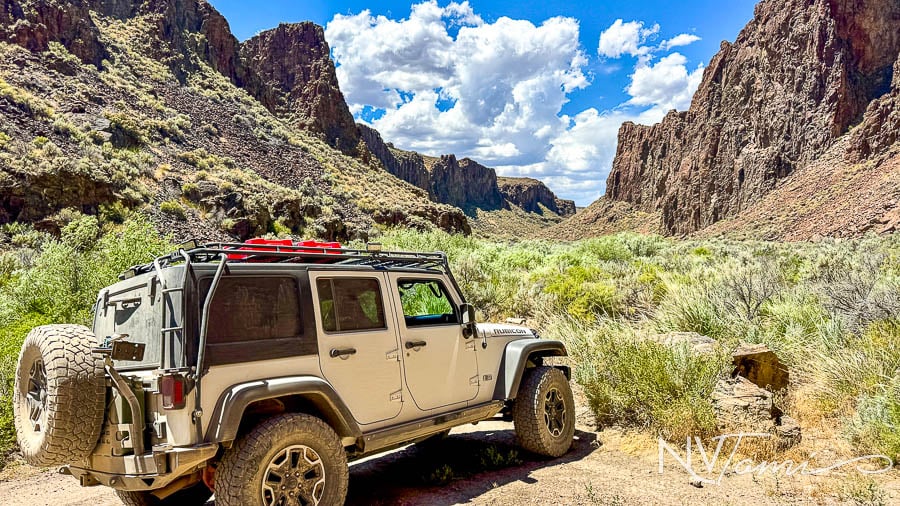
My first big summer expedition was to High Rock Canyon. This trip has been in the plans for some time. While not challenging off-road, it is a commitment getting that far north in Washoe County.
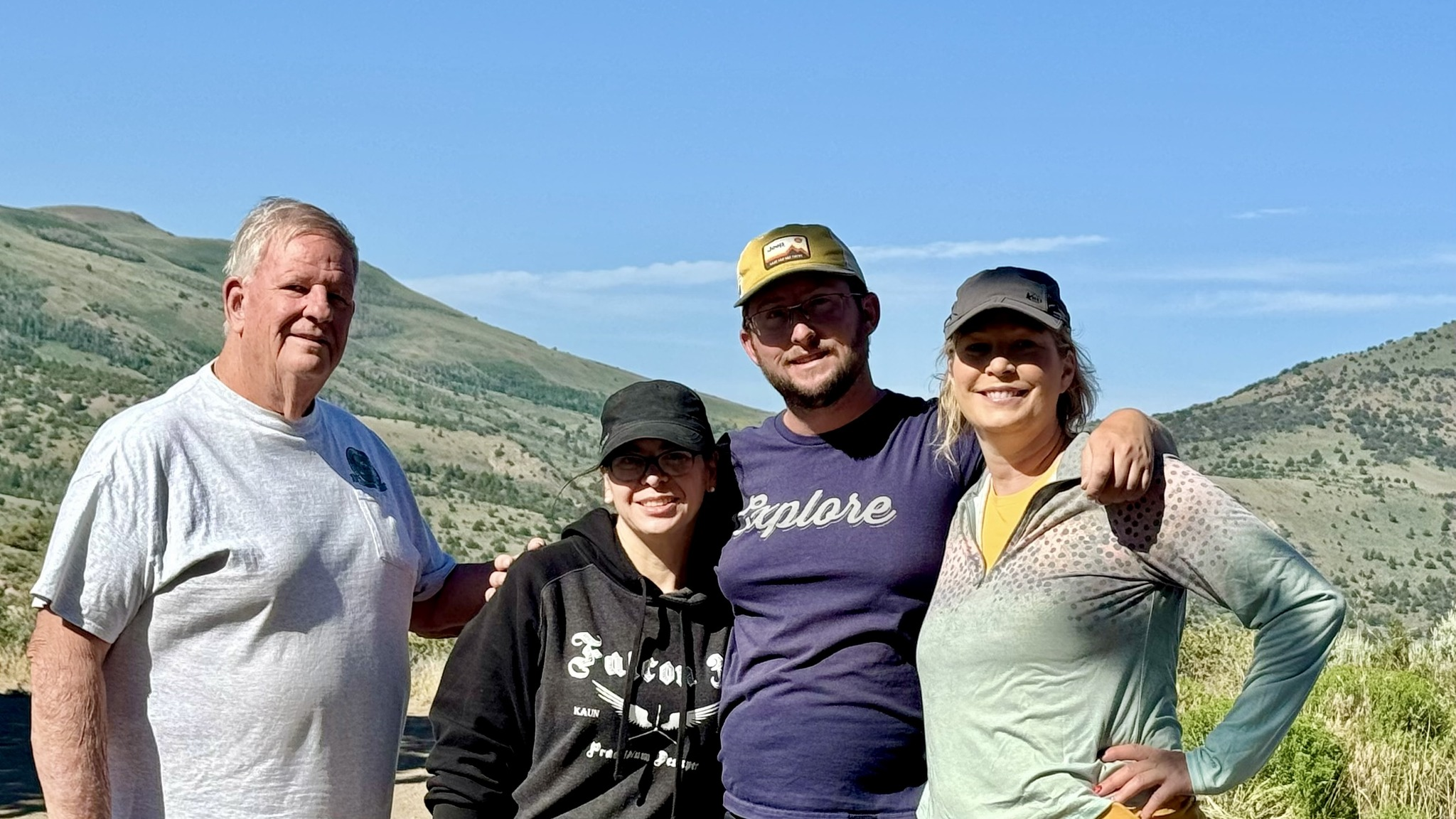
Austin of Nevada Expeditions decided that High Rock was our destination for his birthday trip in early July 2025. Austin searched for a great campsite where we could fuel up the thirsty “Badger Family” while I gathered supplies for the journey. Good friends Kris and Steve decided to join us on the adventure. Steve has extensive knowledge of emigrant trails, which was invaluable.

Austin found a great campsite between Cederville and Vya. Last year was our “year of the scorpion.” Each time we camped, we found the little suckers everywhere. This year, we brought a black light so I could photograph how they glow, and we didn’t find a single one.

The only negative of the campsite was on the windy days, the hurricane-force winds whipped down on the camp, destroying Kris’s tent. The guys anchored her tent to Austin’s Jeep to make it through the second night.


Kris had to be back to work, so she and Steve only joined us for two nights. The following is a list of sites we visited, each with a brief description. I hope to write a full article on High Rock, but it will take some time.

Day 1
Day one was getting to camp and setting up. Of course, we had to hit a few stops along the way!
Olinghouse

Despite earlier discoveries, Olinghouse didn’t develop until 1897 when partners found gold on Green Mountain. A small camp of McClanesburg developed. When the post office opened in 1989, the name changed to Ora, and the town consisted of hotels, restaurants, an assay office, saloons and a two-stamp mill.

Mining declined in 1902, and Elias Olinghouse purchased the claims. He hoped to install a tram or railroad to the Truckee River, but this never occurred. The Green Hill Mining Co. made discoveries and planned a mill at Wadsworth. The Nevada Railroad Company was formed, along with a 50-stamp mill, and the standard-gauge rail and mill were operational by 1907. The ore soon ran out, and the line and mill closed the same year they opened. Olinghouse survived until 1923 when the post office closed.


Natchez Winnemucca’s grave
We paid respects to Sarah Winnemucca’s brother, Natchez. Natchez was known as “Little Winnemucca” and served as a scout at Camp McDermitt.

In respect of Pauite customs and traditions, I am not sharing photographs of his grave, it is near Nixon.
Eagleville

Surprise Valley is one of the prettiest areas I have visited. It reminds me of a small Carson Valley, without all the people. A post office opened in 1868.

Early emigrants on the Oregon Trail first encountered the beautiful and lush valley. On August 22, 1863, the Humboldt Surveyor General Houghton discovered “one of the most inviting valleys to be found in the state.” Surprised to find the beautiful location in the desert, they named it “Surprise Valley.”
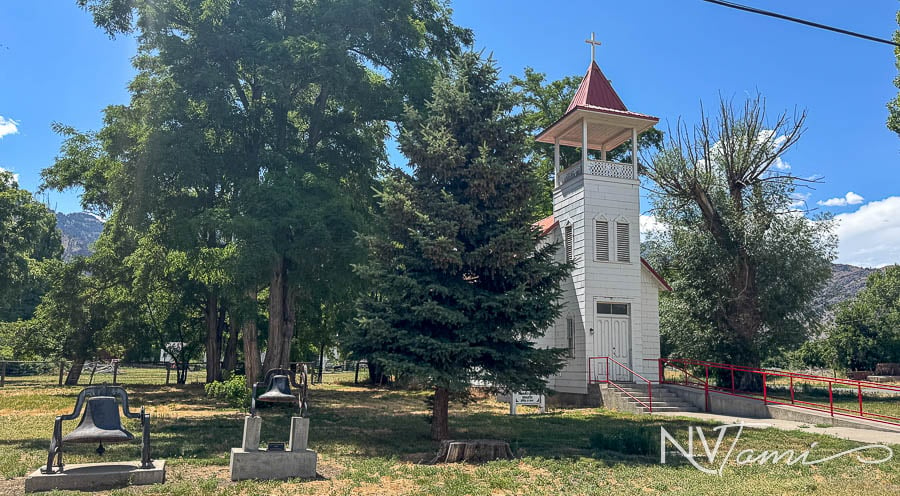
I visited Surprise Valley before, but wanted to photograph the graves of the four ranchers killed in Little High Rock Canyon. Read about Denio Camp: “Nevada’s Last Indian War.”
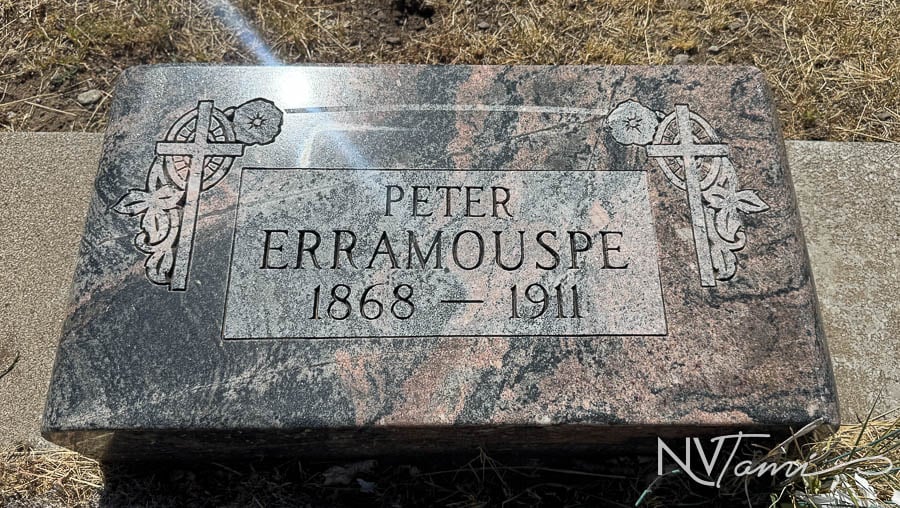

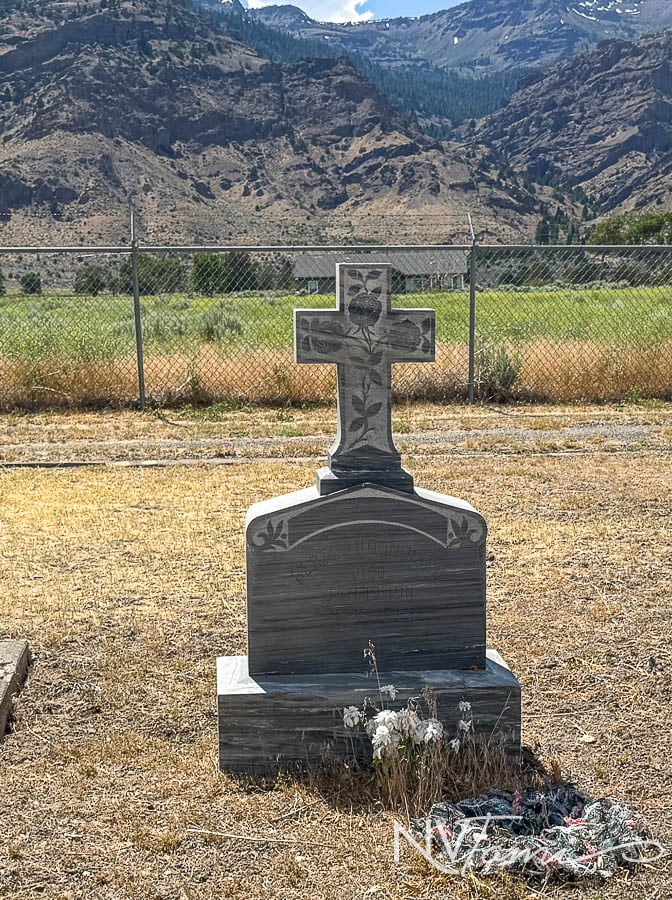
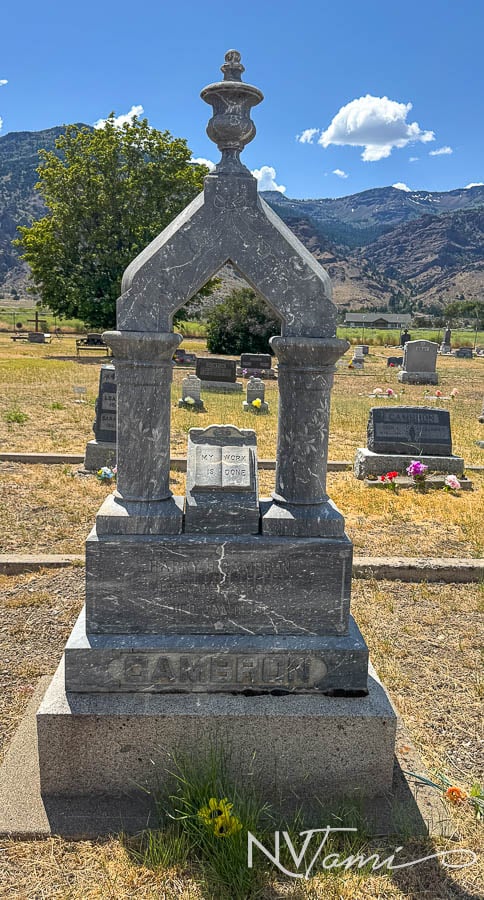
Vya

After we set up camp, we had a little time before dinner, so we ran down to Vya to grab some photos.

Homesteaders moved to Long Valley in the early 1900s. Roy, Artie Wimer, and their daughter Vya were among the first to settle this remote land. A post office opened in 1910, and soon Yva had a school and store. Due to drought conditions, ranching was difficult, and many left for greener pastures. By World War II, the school closed.

Much of Vya is owned by the Old Yella Dog Ranch. Never fear; they have vacation rentals. I hope to stay in their cabin one day.
’49 Rock Camp
Emigrants used the Applegate Train beginning in 1846. Forty-nine Camp, or ’49 Camp, was a notable site due to the numbers written in axle grease on a distinctive rock.

We are all members of Trails West, where Steve serves as a past president and is a member of the board. Trails West is the group responsible for placing the railroad rail markers along emigrant trails. Along the way, as we visited the markers, we checked and documented their condition and added new decals.

There was a cool two-story ranch house near the rock. Rumor has the house had an “interesting history,” and the wives of Cederville burned it down. Hmmmm, that sounds like a story!

Day 2
Lund Petrified Forest

The fossilized stumps were originally known as Leadville Petrified Forest. They were renamed in 1965 to honor George W. Lund. Lund fought to preserve this unique feature.

Little High Rock Canyon

Little High Rock Canyon is just south of High Rock Canyon. I wanted to stop at Little Rock due to the connection with Denio Camp and “Nevada’s Last Indian War.”

On January 19, 1911, four ranchers rode from Denio Camp into Little High Rock Canyon, where Shoshone Mike and his family camped. Thinking the men were seeking vengeance for the rustled cattle, the Daggetts ambushed and killed the ranchers. Following their deaths, their bodies were mutilated, and their clothing stolen. Mike’s band fled east, resulting in a huge manhunt and the Battle of Kelly Creek.

Read about Little High Rock Canyon, Denio Camp and the Last Indian War.
The Little High Rock Hilton

Here is my review of LHR Hilton: Beautiful and peaceful setting. Stunning views. The hotel features a lobby for relaxation, but offers limited additional amenities. The service sucked, and we never saw any staff. We would have stopped for a champagne brunch when we headed to Sheldon, but the valet never showed up to park the Jeep. I guess you can’t keep good help.

Mud Meadows

Mud Meadows was a temporary stop on the Susanville/Idaho stage line in the late 19th century. It had a post office for a short time in 1867. By 1877, it was primarily a wintering spot for cattle belonging to a large landowner.

Fly Canyon

Fly Canyon had two wagon slides: steep sections where they had to slide down a slope, rather than roll. They used strategies including tying off to a rock or locking the wheels with a branch. Slides could be very dangerous, and many accidents have occurred.

The emigrant road didn’t go through the canyon, but to the north side. Emigrants explored the canyon, some leaving their mark on the walls.


High Rock Canyon

The highlight of our trip was the drive through High Rock Canyon. We heard a few weeks ago that the creek was flooding the road. We thought we might have to double back, or trek up the creek for miles, but aside from a few water crossings, it was totally dry.

In 1843, Explorer John Fremont described the canyon.
It was a singular place to travel through shut up in the earth, a sort of chasm, the little strip of grass under our feet, the rough walls of bare rock on either hand, and the narrow strip of sky above.

The Applegate-Lassen Trail was used beginning in 1846. Half the emigrants in the Gold Rush took this route to California.


The canyon is spectacular and worth the trip alone. But, along the way, you can see “pioneer graffiti” from 1852 and wagon ruts. Make sure to check road conditions and keep an eye on the sky. Our week was interspersed with cloudbursts and wind that seemed to come from nowhere.





Steven’s camp

Hunters built the cabin on BLM land, without BLM permission, as a rescue cabin for winter hunters. The cabin is open to the public on a first-come, first-served basis.



Massacre camp

The Massacre Rim was recently designated as one of only twelve International Dark Sky Sanctuaries. Primitive camping at Massacre Ranch features a cabin that is available on a first-come, first-served basis for up to seven consecutive nights. The coolest thing is the old brick oven built into the hill behind the cabin.




Day 3
Bitner Ranch
Bitner Ralph was on our list to visit. It is BLM property, but the road was gated and locked.
IXL

IXL will take some digging to uncover its history. I found a historical photo, but it is labeled IXL Ranch, in Guano Valley, Oregon. I’m unsure if there is a second IXL in Oregon, or if the photo is mislabeled.
The IXL ranch in Nevada was over 2,500 acres. Sheldon Refuge purchased the ranch and maintains it as a waterfowl habitat.




Gooch Camp

Gooch Camp or Spring is one of the historic ranches that are now part of the Sheldon National Wildlife Refuge.

William Daniel “Bill” Gooch was born in 1925. His father worked in a store at a copper mine and later purchased a ranch. Bill began working on the ranch under an “old Texas cowboy” at the age of six. After high school and military service in World War II, Bill returned to ranching. He traveled and worked across the West Coast, gaining a reputation for treating everyone equally and improving the cattle ranching industry. He died in 2019.




Sheldon CCC Camp & Pool

Sheldon National Antelope Refuge was created in 1931 to protect the pronghorn antelope. The Audubon Society and the Boone & Crockett Club purchased the Last Chance Ranch. Originally 34,000 acres, 540,000 more acres were added.

The Civilian Conservation Corps (CCC) was a voluntary work relief program from 1933 to 1942 to address unemployment during the Great Depression. Unemployed and unmarried men ages 18–28 could participate. The program focused on manual labor jobs relating to conserving and developing state and federal lands. Men were paid $30 monthly, along with food, shelter, and clothing. They were required to send home $25 of their pay per month.


They completed multiple projects at Sheldon, including an overnight cabin and worker housing.

Virgin Valley Ranch

The road was flooded from a beaver dam and looked extremely marshy. It wasn’t worth trying to cross, so I grabbed a few pictures from the side of the Jeep. Unfortunately, even though I never stepped onto the ground, willows brushed against me, allowing for a hitchhiker to try and play Dracula on my neck. Few things creep me out like ticks!

The Miller & Lux ranch worked this area in the late 1800s. When the company collapsed, partners purchased the various ranches and combined under the name Virgin Valley Ranch.
On off-time, cowboys collected the pretty rocks, trading them for whiskey in Cedarville and Surprise Valley. In 1944, Wilson, the owner, purchased the Royal Peacock mine for his wife. It turns out that the pretty stones the cowboys traded were black opals! Rock hounds now travel from all over to dig in the dirt in hopes of finding a treasure.
Thousand Creek Gorge

The gorge wasn’t on our plan, but Austin remembered seeing it on a map. All I can say is Wozza! It looks prehistoric and makes High Rock Canyon look like it should be called “Low Rock Canyon.” The mile-long gorge is 600 to 1000 feet deep and less than 100 feet wide in many places.

Sometimes it would be fun to hike, or rather bushwack, the canyon; there are no trails or roads. I bet Golden Eagles call the cliffs home. I also bet rattlers love the isolated canyon.

Denio

Denio wasn’t on our plan, far from it. But fuel was running low, and we decided it was better to head to a known source than risk returning to Cedarville. I visited Denio on a trip to Humboldt and Pershing County ghost towns, but missed photographing the cemetery. I have regretted that decision since, so we made the extra trip to what was Denio, Oregon.

Denio is in Nevada, but just barely. Denio was settled in 1885 by Aaron Denio.

The post office opened in 1888 but was in Oregon. Following World War II, the town relocated over the Nevada border to enjoy the lack of income taxes and liberal laws relating to liquor, gambling, and prostitution. Do you know why they left the cemetery in Oregon when the town relocated to Nevada? I’m working on an episode about this for Radio Goldfield.




Little Sheldon CCC overnight cabin

Leaving Denio, Austin commented that it would be gorgeous to visit the Overnight CCC Cabin at sunset, but we would be too early. Darn it, we have to watch what we say. It is amazing how much trouble a rock the size of a pinky nail can cause. While not fun, the delay put us at the cabin just a little past sunset. I’d still like to stay at the cabin sometime.


Day 4
We didn’t plan a long day 3 as we were heading home, but things don’t always go as planned. On the positive side, it wasn’t as long as it could have been. But we found the area around Black Rock had cloudbursts, turning bone-dry roads into flooded stretches. We decided it was a better option to double back than risk a wet playa. Thank heavens, we didn’t have to go all the way back to Fly Canyon and Lund!
Stone Boys
Austin noticed Stone Boys standing watch over portions of our drive.




Basque herders built these structures, also known as harri mutilak, as trail markers. It is believed they serve as waymarkers. From a distance, they look like sheepherder watching over the area.
Camp McGarry & Soldier Meadows

Came McGarry was a field post starting on November 23, 1865. At the time, it was the largest fort in Nevada. The district headquarters relocated to Fort Churchill in 1866 and the camp was abandoned two years later. The land was then turned over to create the Summit Lake Indian Reservation.


Clapper canyon
I came across Clapper Canyon while researching Peter Lassen.

Lassen was murdered on April 26, 1859, in Black Rock Canyon. He traveled to Hardin City, Nevada, to prospect for silver. Lassen was traveling with Edward Clapper and Americus Wyatt. Lassen and Clapper were shot and killed, but Wyatt escaped, saying a hidden sniper shot them. The attack remains a mystery; theories include that Lassen and Clapper were killed by Paiute Indians, disgruntled travelers on the Lassen Cutoff, or even Wyatt.

Lassen and Clapper’s bodies were buried at the site of the attack. In November, Lassen’s remains were reburied under a large tree at his ranch outside Susanville. In 1990, rockhounds discovered a skull and upper body bones, which were later determined to be Clapper’s. His remains were reinterred alongside Lassen in 1990.
Hardin city
For me, Hardin City was the highlight of our trip.


In 1849, traveling the Lassen-Applegate Trail, James Hardin discovered ore at the northern end of the Black Rock Desert. He thought it was lead and made bullets from the material. In 1850, thinking it contained silver, he sent a sample to assay. The sample was lost in a fire.

In 1858, an expedition set out to locate the mine. This set off a rush to what became Hardin City. Many left in 1860 with the Pyramid India War. They returned and Hardin City had a post office open in 1866. Two years later, the name changed to Harveyville.

No significant silver was found and Harden City soon became a ghost town.
Hardin City is one I want to dig into. I have a feeling there is a lot more to the story!
The best way to end a trip!

Great end to the trip at Papa’s Pizzeria in Wadsworth. After 4 days camping and exploring High Rock Canyon and Sheldon preserve, we were starving! Papa’s Pizzeria did not disappoint. Look at what book was right next to my seat.

The pizza was great, but the garlic knots and Cannoli Cheesecake were to die for!

The next big camping trip is Labor Day weekend for my birthday. Where are we heading? Don’t worry, there are other trips planned this summer, but so far, none of them are camping.

Lisa says
It was so cool seeing again “my back yard” from High Rock Canyon to Denio. Thank you for sharing💛
Tami says
Beautiful back yard! I hope to make it back to your area next summer for training. We are also talking about a trip exploring around Denio.
JP says
Wonderful 😘 article and so rich in details!!
Tami says
Thank you, glad you enjoyed the trip!
David Sadewasser says
What a great trip, Tami! And gorgeous photography! One question: Did you actually see any pronghorn in northwest Nevada? I was in the vicinity in the summer of 2024 on a trip on the “Winnemucca to the Sea” route, NV 140, and didn’t see any. I’ve heard that they’re a victim of global warming, and the herds have moved farther north into Idaho and Canada.
Tami says
We did see a large herd of antelope. They were in the distance so I didn’t get any great photos.
ST says
Very interesting! I’ve always been curious about the northwest area. Thanks for all the information and history.
Tami says
I have another article about Northern Washoe County. There are a lot of locations, but many are on private ranches so I only got photos from the road. I’d like to try and get better access.
Keith Kwiecien says
Tami fantastic article. This one is going to be hard to beat but knowing you its just around the corner.
you write like the late Ray Chesson did in his Trip of the Week articles in the Review Journal paper in Las Vegas back in the 1950’s and 60′. Keep up the excellent work.
Keith K. from Henderson Nv.
Tami says
Thank you, I’m glad you enjoyed it and it was an amazing trip! My trip has week to Tybo was great, but not on the same level as High Rock.
Thanks for the suggestions, I’ll check into Chesson, I bet he saw some amazing places!
Jeanne Goldman says
So worth waiting for…you never disappoint. I moved to Surprise Valley about 25 years ago, with maps, horses and camping gear, met up with a long time resident back country explorer and took off !! Your article is a personal way for me to document where I’ve been, as I’m not the best for taking photos. So glad I joined your site. A lot of us live through your adventures. Thank you.
Tami says
I bet you explored a lot living there!
I’m glad you enjoyed the site and my travels. I have another article on Northern Washoe Valley where I bet you visited a lot of the places. I don’t think I had the places on the California side in that article, which I regret.
Leslie Ragan says
These are the kind of trips my husband and I like to go on. Anything with Nevada history. Are these a group trip that people can go on with you, or just your journeys? You all sure packed a lot in 4 days! Enjoyed this very much! Places we’ve never heard of. Thanks for sharing!
Tami says
With the BLM and insurance regulations, I’m not able to guide trips.
Look into Trails West. They do a ton of trips following the emigrant routes. Churchill County offers some day trips through their parks and rec.
Jeff Gorton says
Loved this Tami! I’ve been to all those places and it made me yearn to return! For now, though, I will live vicariously through your photos and captions.
Tami says
I’ve love to see you travel again and all your and Jackies photos!
I live vicariously though all your adventures.